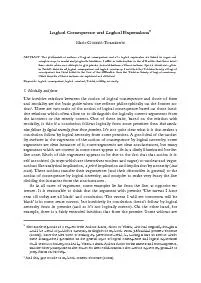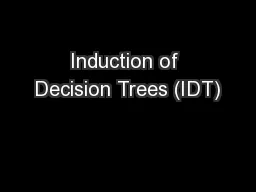PPT-Decision trees MARIO REGIN
Author : danika-pritchard | Published Date : 2019-11-24
Decision trees MARIO REGIN What is a decision tree General purpose prediction and classification mechanism Emerged at the same time as the nascent fields of artificial
Presentation Embed Code
Download Presentation
Download Presentation The PPT/PDF document "Decision trees MARIO REGIN" is the property of its rightful owner. Permission is granted to download and print the materials on this website for personal, non-commercial use only, and to display it on your personal computer provided you do not modify the materials and that you retain all copyright notices contained in the materials. By downloading content from our website, you accept the terms of this agreement.
Decision trees MARIO REGIN: Transcript
Download Rules Of Document
"Decision trees MARIO REGIN"The content belongs to its owner. You may download and print it for personal use, without modification, and keep all copyright notices. By downloading, you agree to these terms.
Related Documents














